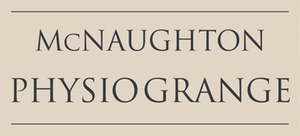Hands – “One finger, one thumb keep moving”
You may remember this as the start of a primary school song which built up, verse by verse, to get pupils moving parts of their body as they sang. As we get older, though, keeping our hand joints moving can be a big problem for some of us, particularly if Osteoarthritis strikes.
Osteoarthritis (OA) of the hand joints often happens as part of nodal OA – a form of arthritis that runs in families and mainly affects women in their 40s or 50s. This type of OA affects the base of the thumb and the joints in the fingers. Over years, firm knobbly swellings form at the finger joints. These are called Heberden’s nodes when they form at the end joints of your fingers or Bouchard’s nodes if they are at the mid finger joints.  The good news is that these nodes look unsightly but can actually become less painful once they are fully formed. The bad news is that if you have nodal arthritis in middle age, you are more likely to develop arthritis in your knees as you get older.
The good news is that these nodes look unsightly but can actually become less painful once they are fully formed. The bad news is that if you have nodal arthritis in middle age, you are more likely to develop arthritis in your knees as you get older.
Research shows that 20% of the population over the age of 50 has OA of the thumb and more than 12% of people over the age of 50 have severe hand related disability. Despite the huge number of people affected, there is not yet a huge research base of evidence detailing what can help. This means that many people who go to their GP with hand pain due to OA are told that there are few options other than painkillers, so they don’t go back or seek further help. However, research is now emerging that suggests that hands, just like hips and knees, respond to exercise to help the pain and joint stiffness caused by OA.
OA is now known to be more of a “wear and repair” process than a “wear and tear” process so that exercises really can make a difference to how the condition progresses. Do not accept problems as a natural part of aging. Pain, joint stiffness and muscle weakness, all symptoms of OA, can be helped by exercise. These exercises can by tailored towards stretches and mobilising techniques to improve muscle and tendon flexibility and, therefore, joint movement. Exercises can also be geared towards improving muscle strength or endurance. Once you know what to do, it is easy to continue these at home.
If exercises and medication do not help then there are other options in the form of steroid injections or surgery that can offer pain relief and help function. However, surgery is seldom necessary for OA hands. More information can be found from Arthritis Research UK at www.arthritisresearchuk.org or from the Chartered Society of Physiotherapy on www.csp.org.uk. If you have any questions, we’d be happy to help too – just give McNaughton a call on 0131-337-5135. One finger, one thumb – keep them moving and life stays merry and bright.

